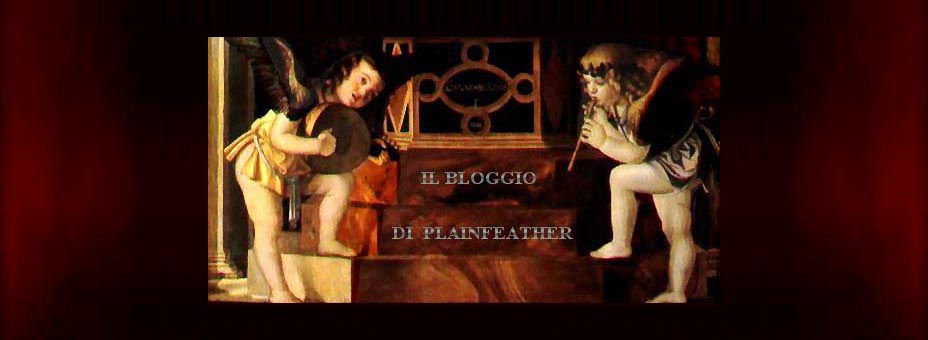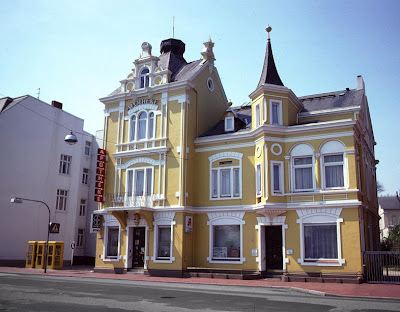The little North Frisian island of Pellworm on the North Sea coast of Schleswig-Holstein is a convenient escape from Hamburg on hot summer days. It is encircled by a dyke upon which grazing sheep circulate in a somewhat diffident manner.
Over the edge is a thin strip of beach populated by day-vacationers, probably Hamburgers. Note the pounding surf, an object of derision for any visitor from California.
German beach behavior should be and probably is already a worthy subject of sociological analysis. First, there signs are posted which divide the beach like grids on a sheet of graph paper indicating what it is permitted and where: let your dog run free, take your clothes off, build a sand castle, etc. Second, the visitor stakes claim to a small parcel of beach sand over which s/he becomes the temporary proprietor. This may be accomplished by renting a
Strandkorb or "beach basket" in which you can sit and activate your nature experience by staring out at the ocean.
Or if for some reason you feel encouraged to resist entropy you might rent a bicycle and examine the island's rather minimal architectural heritage, which includes an attractive ancient parish church.
North Germans are proud of their patch of sea coast on the North Sea and on the Baltic. To hear the touristic and media hype, you'd think Germany was one of the great sea-faring nations of the world. This is distinctly not the case, but there are many pleasant moments to be found along the German coast.
And also some odd ones. I can't remember where I took this photo of a monument to an ocean mine, (probably Cuxhaven), or rather to those who were killed by such. I couldn't figure out from the inscription whether enemy personnel who were blown up by the German mines were being memorialized, or rather those who were laying the mines, in which case they must have been awfully clumsy.
+











































